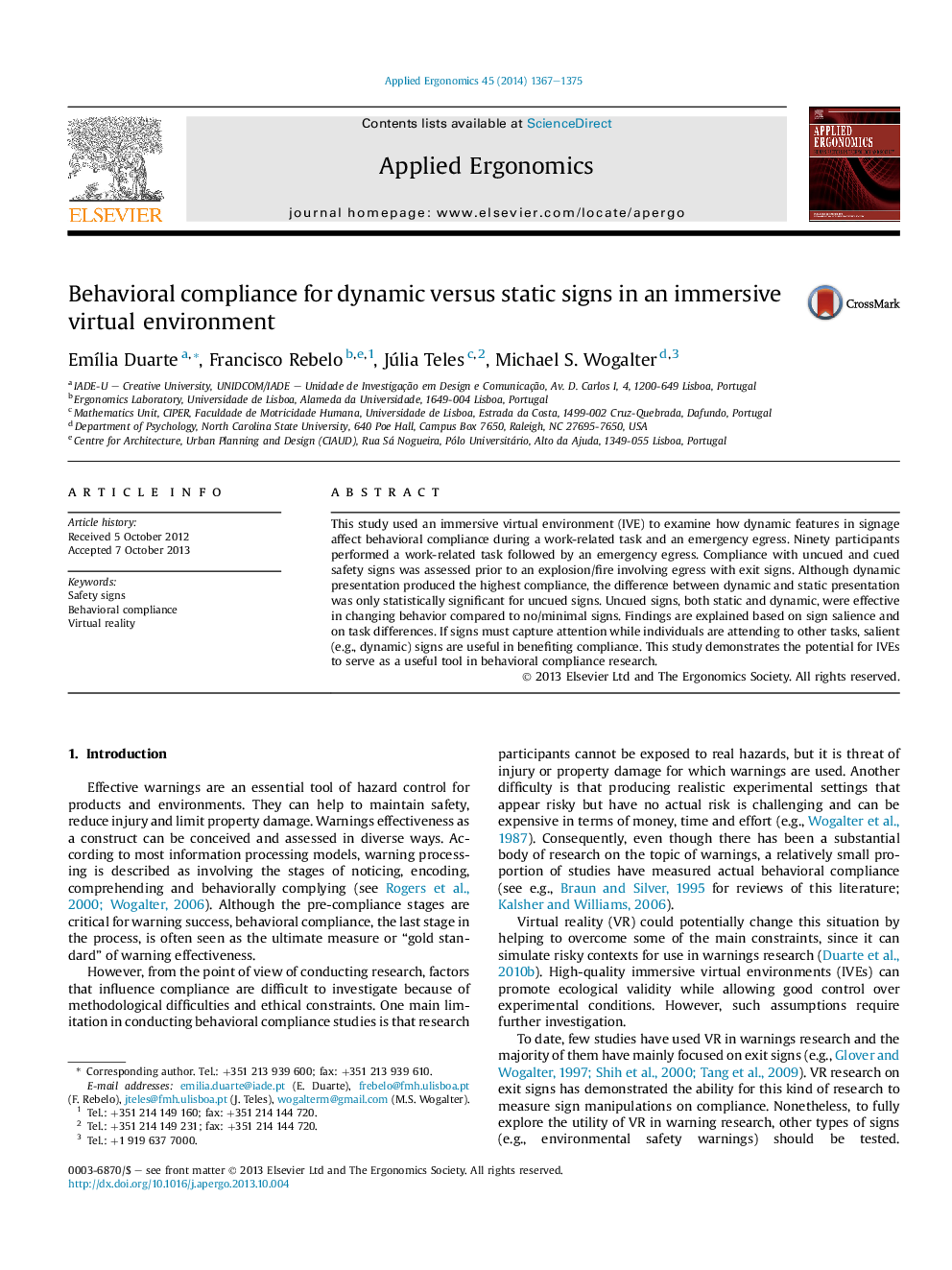| Article ID | Journal | Published Year | Pages | File Type |
|---|---|---|---|---|
| 551025 | Applied Ergonomics | 2014 | 9 Pages |
This study used an immersive virtual environment (IVE) to examine how dynamic features in signage affect behavioral compliance during a work-related task and an emergency egress. Ninety participants performed a work-related task followed by an emergency egress. Compliance with uncued and cued safety signs was assessed prior to an explosion/fire involving egress with exit signs. Although dynamic presentation produced the highest compliance, the difference between dynamic and static presentation was only statistically significant for uncued signs. Uncued signs, both static and dynamic, were effective in changing behavior compared to no/minimal signs. Findings are explained based on sign salience and on task differences. If signs must capture attention while individuals are attending to other tasks, salient (e.g., dynamic) signs are useful in benefiting compliance. This study demonstrates the potential for IVEs to serve as a useful tool in behavioral compliance research.
